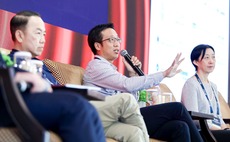
Asia LP interests: The price factor
Global LPs have no intention of reducing their exposure to Asia. This has put upward pressure on secondaries prices, but assessing fair value is more difficult than it seems
Private equity executives are understandably sensitive about LPs selling down fund interests on the secondary market because they no longer consider them a core part of their portfolios. Asian GPs are no exception. Indeed, an overall lack of familiarity with the process can lead to a wide variety of responses.
"Last year we advised on the sale of a portfolio of 12 fund interests, including some Asian assets," recalls one Europe-based advisor. "For a number of these funds, it was the first time they had a real secondary in their LP base. Some said, ‘Let me know what I can do to help,' while others said ‘Oh my God, no - I only want to work with certain people'. Another response was, ‘You can sell the interest to me, the GP,' but of course that creates conflict of interest issues."
Fortunately for Asian GPs, such experiences remain few and far between. Investors are generally disposed to hold on to their Asian assets at the expense of European and US interests. It is both a response to recent macroeconomic concerns and a bet on which region will likely drive global growth in coming years.
Willing sellers
There is no shortage of activity in the secondaries market worldwide. Campbell Lutyens projects transaction volume will pass $30 billion for the first time this year, up from $22 billion in 2011. Lexington Partners is more conservative, predicting that 2012 will match but not exceed 2011, although it recorded deal volume of $25 billion last year.
"This volume is still materially driven by very large deals out of Europe and the US," says Thomas Liaudet, a partner at Campbell Lutyens. "The principal sellers are banks and insurance companies, and pension funds and endowments, in each region respectively."
The summer 2012 instalment of Coller Capital's Global Private Equity Barometer appears to concur. Of the 101 investors polled, 60% have engaged in secondary transactions; in the next 2-3 years, more investors will access the market than ever before, albeit joining the fray in a trickle. However, the number of North American LPs with more than 10% of their PE commitments in Asia Pacific will nearly double in the next three years. Europe is expected to witness an even sharper hike.
One of the challenges for secondary investors targeting assets in Asia is high pricing - largely a result of the limited supply of LP interests.
"In Asia, sellers' pricing expectations have been high, as is the case in a number of emerging markets globally," says Andreas Baumann, partner and co-head of the Singapore office of Partners Group. "People don't necessarily want to get rid of their emerging markets exposure; if anything, they continue to price in very optimistic growth scenarios for these markets."
Other secondary investors broadly agree with this thesis, but add that pricing secondaries remains a complicated issue. Pricing is expressed as a percentage discount to the latest net asset value (NAV) of the portfolio, although some Asian funds are sufficiently popular that they trade close to par, but it's rare. While convenient for GPs, this measure isn't necessarily the most useful to investors.
The problem with NAV
First of all, NAV is often outdated or overly volatile. Furthermore, as a reflection of the GP's own perception of the value of its portfolio, it is also subjective.
"NAV is calculated on a quarterly basis by GPs and it can rise and fall in accordance with valuation processes," says Jason Sambanju, a Hong Kong-based managing director with Paul Capital. "Most US dollar funds follow FAS 157, which requires that a portfolio should be valued as close to its fair market rate as possible, but there is still subjectivity in its interpretation."
The use of mark-to-market techniques has resulted in greater movement in NAV between quarters. Problems within the portfolio or poor public market performance can have a significant impact on valuations. Asian GPs might be particularly affected by this, given the tendency to hold onto a portion of portfolio companies after IPO. Secondary investors, meanwhile, are primarily interested in their own independent assessments of a portfolio's current value.
The result is a mismatch between an acceptable buying price and NAV, which means discounts can vary considerably in the space of 3-4 months, despite no comparable change in the underlying assets.
"The real dollar price for a specific portfolio might stay the same, but how it's expressed as a percentage of NAV will move as new NAVs become available at quarter end," says Javad Movsoumov, executive director in UBS' private funds group in Asia Pacific.
"Ironically, you sometimes come across situations where sellers are more willing to accept an offer after a dip in NAV. The same dollar offer value will result in a smaller NAV discount after such a dip. This may help to narrow expectation gap and increase the chances of transactions closing."
Those who understand the market can adapt. For some sellers, though, the prospect of offloading assets at a 50% discount to NAV because, for example, there may be some uncertainty over future commitments becomes a psychological and perhaps a fiduciary difficulty. Transactions often have to go through approval procedures and boards might not fully grasp how the system works.
In other cases, inexperienced secondary investors have entered the market, drawn in by reports of massive NAV discounts, without considering the groundwork required. The likes of Lexington, Paul and Coller devote considerable resources to producing real-time valuations of portfolios.
"People put too much emphasis on the number of the discount, which oftentimes has little meaning because it refers to an outdated NAV," adds Partners Group's Baumann. "We are more interested in assessing the quality, future potential and cash generation capacity of the underlying assets."
Judgment calls
Assessments of a portfolio's value and its relationship to NAV are not the only consideration. Much like their counterparts on the primary side, a secondary investor is also required to make a call on the stability of the management team. Again, this has particular relevance to Asia, where private equity firms tend to be younger and have experienced fewer market cycles.
Unfunded commitments are naturally factored into pricing. Assume a $10 million LP commitment of which $8-9 million has been drawn down trades at a single-digit discount. A similar-sized commitment that is only $4 million drawn down is priced at a lower level even if the quality of the underlying assets in both positions is comparable. This reflects the fact that investor has to take a risk on if, when and how lucratively the unfunded commitment is invested.
Most specialist secondaries buyers prefer to consider LP positions that have been at least 50% drawn down.
If a fund is performing poorly, there is an added danger that the team will break up. The worst-case scenario is that this leads to a key-man clause or no-fault divorce clause being activated, the fund being wound down and existing assets jettisoned quickly. A secondary investor might have paid $250 million for exposure to a pool of assets worth $300 million, but this means little in the event of a fire sale.
Less drastic but equally frustrating for the investors, the fund could continue in a weakened state, perhaps unable to invest in new assets or manage portfolio companies as effectively as before, and weighed down by the knowledge that LPs are unlikely to re-up for a successor vehicle. The investor interests are on the market but might trade at a substantial discount.
"When you talk to a secondary buyer, their perception of a manager is often in line with that of the primary investor," says UBS' Movsoumov. "There is one pan-Asian fund that hasn't been doing so well lately and this is reflected in the pricing on the secondary market. The concern is: Will the key members of the team depart and the value of the assets deteriorate?"
Latest News
Asian GPs slow implementation of ESG policies - survey
Asia-based private equity firms are assigning more dedicated resources to environment, social, and governance (ESG) programmes, but policy changes have slowed in the past 12 months, in part due to concerns raised internally and by LPs, according to a...
Singapore fintech start-up LXA gets $10m seed round
New Enterprise Associates (NEA) has led a USD 10m seed round for Singapore’s LXA, a financial technology start-up launched by a former Asia senior executive at The Blackstone Group.
India's InCred announces $60m round, claims unicorn status
Indian non-bank lender InCred Financial Services said it has received INR 5bn (USD 60m) at a valuation of at least USD 1bn from unnamed investors including “a global private equity fund.”
Insight leads $50m round for Australia's Roller
Insight Partners has led a USD 50m round for Australia’s Roller, a venue management software provider specializing in family fun parks.








